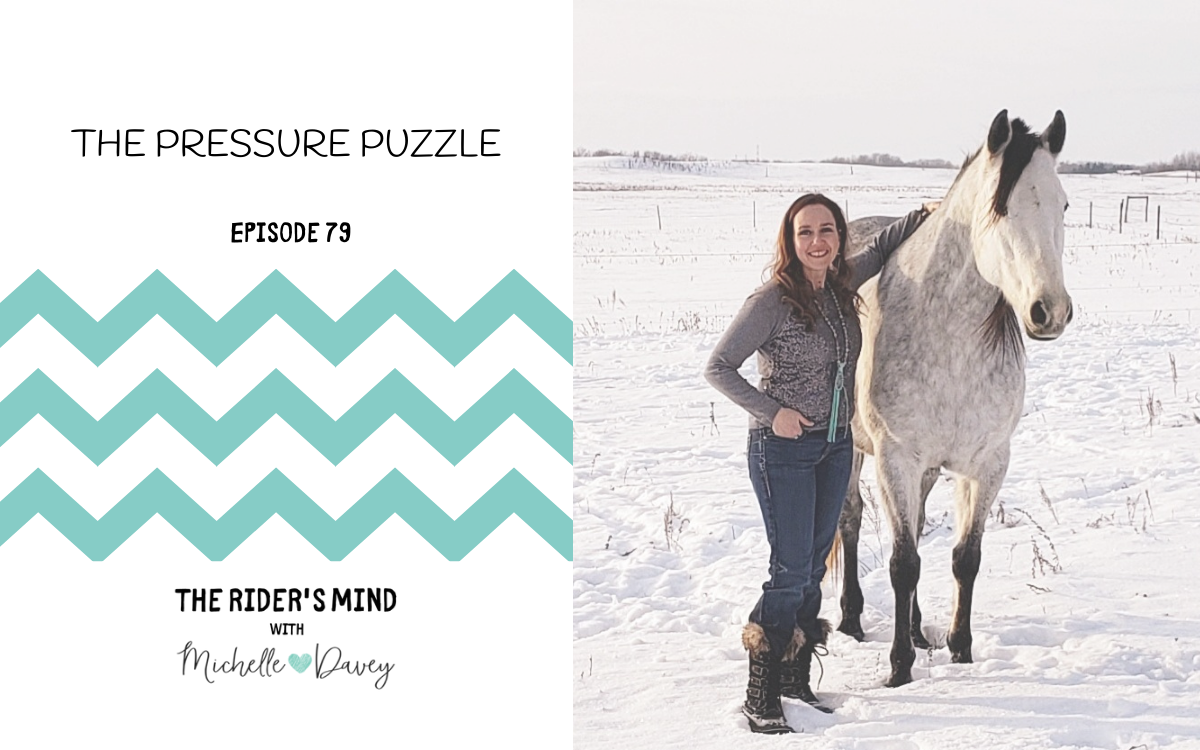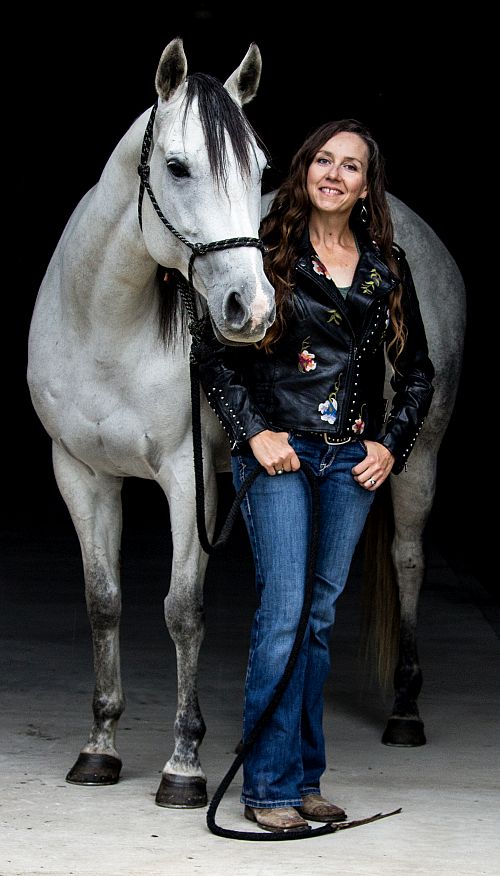
The Rider’s Mind Podcast Episode 79: The Pressure Puzzle
I’ve been studying the horse’s nervous system and learning to pay attention to their state of arousal. I’ve been training with this in mind and I’m excited to share with you what I’ve learned! In this episode, you’ll find out more about influencing your horse’s nervous system and how you can keep your “pressure puzzle” stuck together.
The horse’s autonomic nervous system is comprised of the parasympathetic nervous system and the sympathetic nervous system. I learned about the polyvagal theory from a Warwick Schiller video. It’s been very intriguing to study this and think about how it applies to horses and riders.
We are responsible for our horse’s ability to learn and perform.
There is a strong connection between a horse’s performance and their nervous system. The nervous system also affects their overall health and well-being.
Some people say that horses can be either in their “thinking mind” or “reacting mind”. From what I’ve discovered, it’s more like dials: horses can think and react at the same time. It’s a scale of how “dialed up” they are on each system. I think of the parasympathetic system as rest and digest. I think of the sympathetic system as flight or flight. We can adjust the “dials” for each depending on what we’re doing with our horse.
Many of the people who study this are probably appalled at how far we push barrel horses’ nervous systems in both their training and competition. When we train horses for action and speed, we are pushing the limits.
It’s important to prepare our horses to handle stress and pressure so they can switch out of the “stressed” sympathetic system and get back to the “rest and digest” parasympathetic state.
I think a lot of horses get stuck in stress. They aren’t given enough time or training to get back into the parasympathetic state. By increasing our awareness of a horse’s state, we can teach them to handle stress.
The idea of dials really made sense to me. A horse can be relaxed to turn but then “turn up the dial” on the sympathetic system to run fast. It’s about teaching our horses that they are safe so they can think and “turn down the dial” when needed.
I think it’s safe to say horses never really get fully into “rest and digest” as we’re riding. However, a horse that goes and slow lopes with his head down is probably “dialed” pretty low on the sympathetic system.
I was having a conversation with my aunt about this and I had a flash of an image of a puzzle in my mind’s eye. The horse’s nervous system is what sticks the puzzle together. A finished horse has all of these pieces: the training, their body, their foundation, their skills and their ability. Without your horse’s ability to regulate its nervous system, your pieces might not come together or they might not stay together.
The Pressure Puzzle
A finished, sound and sane horse has all the pieces of their puzzle clipped together and they are secure.
For a horse that has all the pieces, but is nervous or anxious, the pieces are loose. When we are training a young horse, we are putting together the puzzle of foundational skills. When the foundation and pattern is solid at home and we start to haul, we test the nervous system and the horse’s ability to handle stress which might loosen some pieces. If we don’t come back and tend to those loose pieces, they are going to get further and further away from the finished puzzle and take longer to bring back. If we stop to build back their confidence and put the puzzle back together, then we can test things again and haul again.
This is all the more reason to tend to issues promptly and give yourself time to “put the pieces together” after you’ve made a run.
If you have a soundness issue, it might swell up and pop out of the puzzle and start affecting the nervous system. A horse that’s unsound is more likely to be stressed. When there is anxiety, we start to strain the pieces nearby. If we tend to issues promptly, it’s easier to put things back together without doing further damage.
On a barrel horse, when we first ask them to run, we want to be really confident that we can go back and “put them back together” afterwards. We don’t want to go to the next competition and show up with “loose pieces”.
Every run, we run the risk of blowing up our puzzle.
Through training, we learn how much we can dial a horse up and we can also teach them how to come down off of their “high” and reset their own nervous system. By adding and removing pressure, we can build their resilience and teach them it’s safe and they can dial it down.
It’s unfair to show up to a race and ask for a run without ever applying pressure before.
If you haven’t worked on turning up and down the dial before, you’re more likely to blow your puzzle apart. I teach about this in more detail in Stride.
Some people may think that we should try to have horses living in a parasympathetic state all the time, but if we’re going to use them for any kind of riding, I don’t see how it’s possible. In speed events, we add stress and push our horses. So it’s our responsibility to learn how to manage our horse’s nervous system.
I’m not condoning riding a horse hard so they get used to it but, if we’re going to put pressure on a horse, we need to be mindful of what’s happening in their nervous system and how we can manage it to our advantage so they can learn and understand.
As a rider, you are wired similarly.
In order for something to feel comfortable, sometimes it feels like pressure at first right? We can increase our capacity for a stressor so it’s not stressful anymore. We have to do uncomfortable things so they become comfortable. When I teach about finding your ideal performance state, it’s really about moving your own dial to the place in your nervous system where you can ride best for your horse. If you’re stuck in stress, you can see how it would be hard to regulate your own nervous system to dial down to be calm for your horse.
I hope you’ll consider this information in your training and, if you want to learn more, you can join the waitlist for Stride and when you become a member, you’ll have access to a whole module on this topic!
The Polyvagal Theory and Horses: An Introduction
https://equusoma.com/the-polyvagal-theory-and-horses/
Join the Conversation
Join the discussion in the The Rider’s Mind Community on Facebook. As a member of this community, you’ll also get tips and videos from me.
Want to connect or ask me a question? Find me on Instagram or Facebook.
Learn with Me
If you’re looking to make changes to your mindset, be sure to sign up for my free Next-Level Mindset Mini Course.
You can also get on the waitlist for Stride, my next-level barrel racing group, which will be open for enrollment soon! This group receives video training and coaching from me and Stride members have access to special guests. We work on becoming mindful barrel racers so we can show up, be present and perform with great partnership.
Subscribe: Apple Podcasts or Spotify

